Rental car companies, meet your latest addition to the fleet. It’s called the Yaris Cross GX.
Of course, rental car companies aren’t buying anything due to a rather well-travelled virus. But if they were, it wouldn’t surprise me if the Yaris Cross was to become a staple in their range given a glance at the spec sheet. Strong reliability, crossover practicality, plenty of safety tech, and ‘a dose of fun’, according to Toyota.
Anyhow, we now have our hands base-spec Yaris Cross GX, continuing with our string of Yaris models which we’ve reviewed, including the Yaris ZR hatch, Yaris ZR hybrid hatch, and Fred’s recent review of the Cross Limited Hybrid.
So far, our impressions of the other Yaris models have been good. Let’s see how the Yaris Cross GX fares.
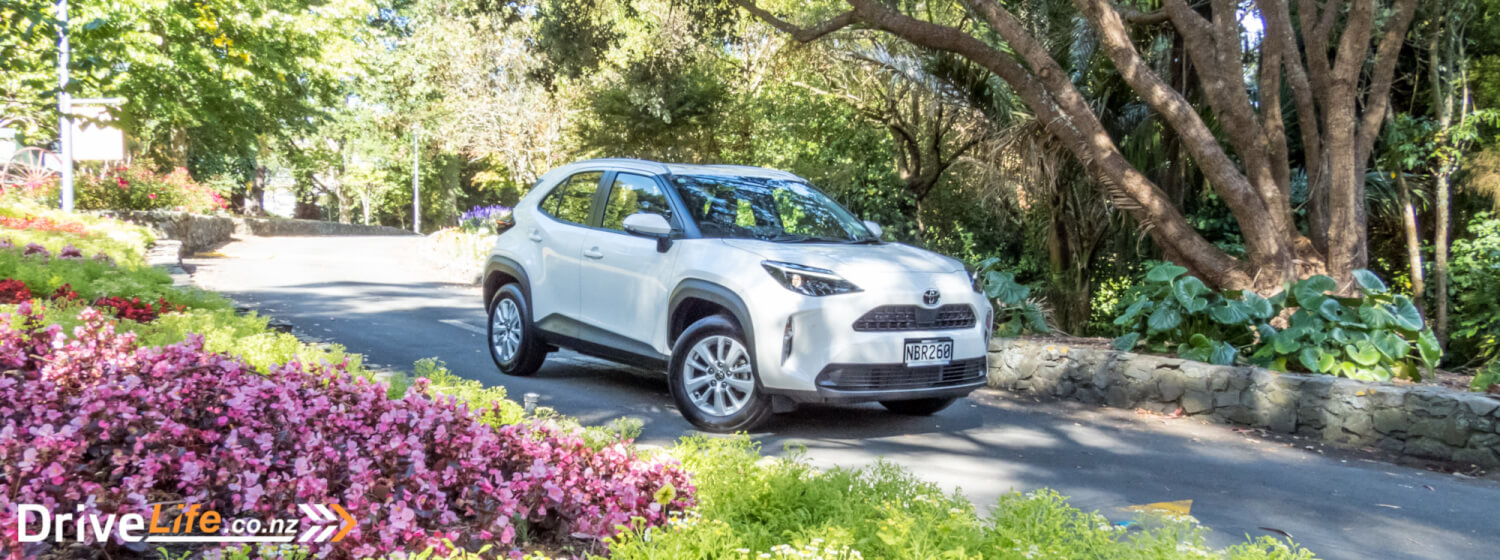
What’s In The 2021 Toyota Yaris Cross Range?
The Yaris Cross is offered in four different trim levels. As mentioned in Fred’s review of the Yaris Cross Limited Hybrid, the Yaris Cross doesn’t adhere with the usual naming conventions used for the Yaris Hatch.
Starting with the base trim is the GX ($29,990, tested), then there’s the GX Hybrid ($33,990). Instead of the next trim up being named a ZR, the top spec model is the Yaris Cross Limited Hybrid ($38,990). Add another $500 if you would like your Limited version in two-tone paint.
All models are front-wheel-drive only, with both the hybrid and non-hybrid running the same 1.5-litre, 3-cylinder petrol engine. This engine produces 88kW of power in the base model, and a lower 67kW in the hybrid, but the combined output of the hybrid system does take output upwards to a total 85kW. The non-hybrid produces more torque too, 145Nm for the base, and 120Nm in the hybrid.
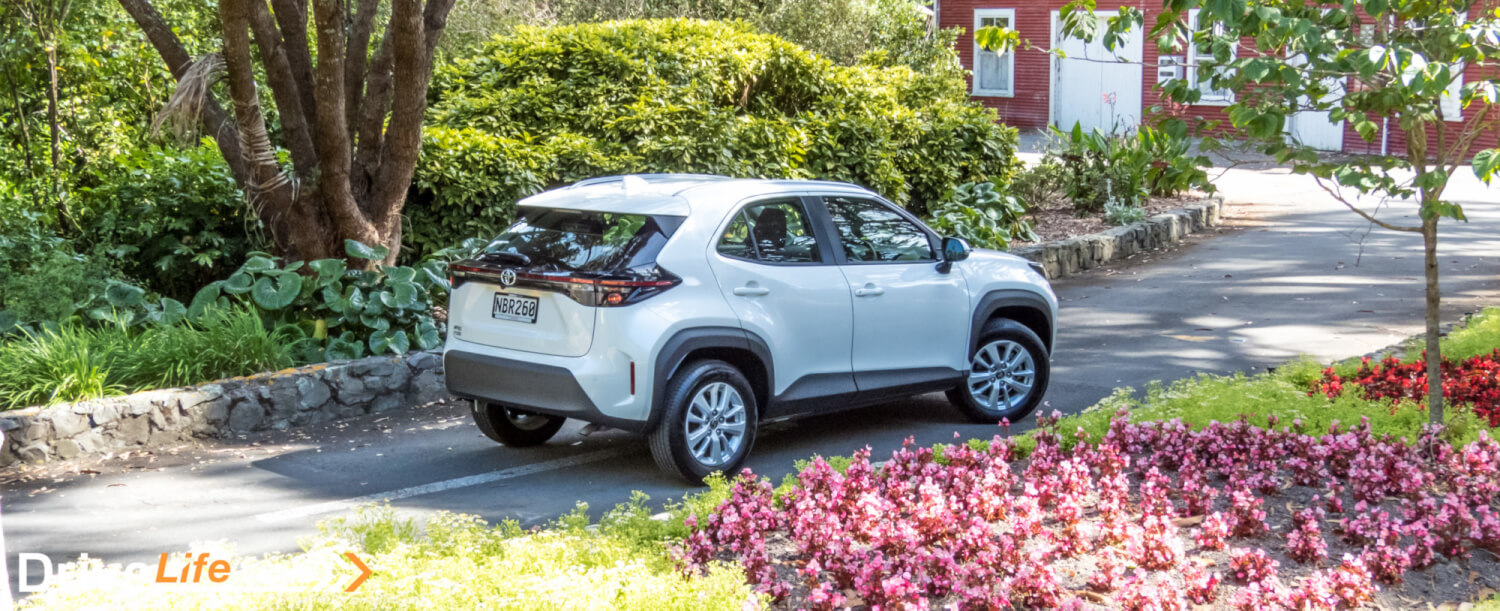
The core specs between the models are largely the same, save for a few differences. The non-hybrid has trailer sway control, whereas the hybrid does not. Conversely, the hybrid has climate AC where the non-hybrid does not. Hybrid models are also 50Kg heavier.
Our test vehicle is the base level GX non-hybrid model. As standard, there’s 16” alloy wheels, 8 airbags, 6-speaker audio, a 7” touchscreen with Apple Carplay and Android Auto functionality, reversing camera with dynamic guidelines, front and rear parking sensors, and Toyota’s Safety Sense package (including adaptive cruise control, Lane Tracing Assist, Lane Centering, automatic high beams, Road Sign Assist, blind spot monitoring, hill start assist, Brake Assist, and other safety features).
You can choose from seven colours for your Yaris Cross; Crystal Pearl (white), Tensile Silver, Ink (Black), Ruby (Red), Golden Ore, Arctic Dawn (Grey Blue), or Blue Crush (Deep Blue).
You can read more about the Toyota Yaris Cross range on Toyota New Zealand’s website.

First Impressions Of The 2021 Toyota Yaris Cross GX
From a distance, the Yaris Cross is a fairly decent looking crossover, yet I struggle with calling it a Yaris. Sure, it’s built upon the same TNGA-B platform as the Yaris hatch, but there’s not a lot that screams ‘Yaris’ to me. The Cross seems more deserving of its own product line.
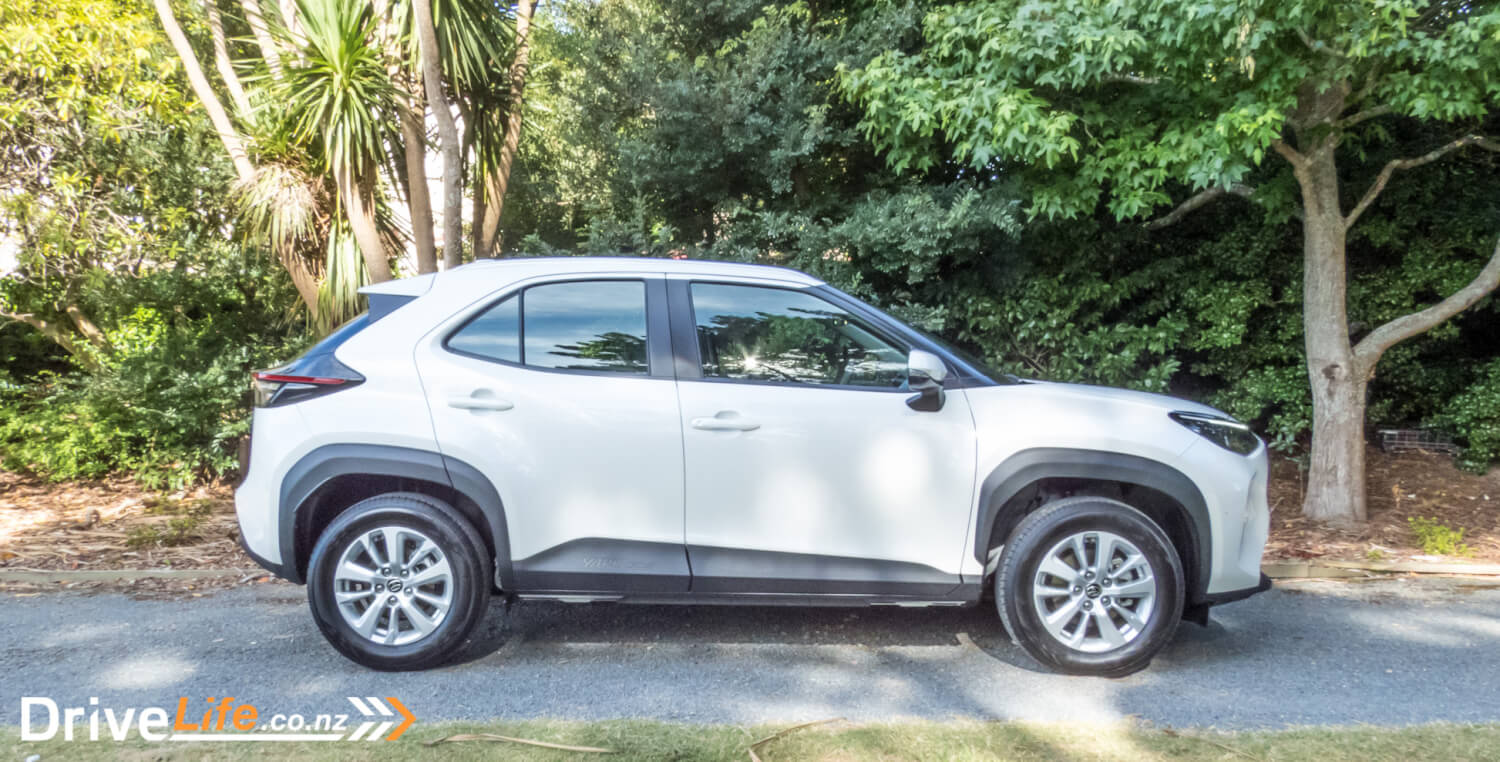
For example, the front-end is much softer and rounded compared with the angular features on the Yaris hatch. There’s also a different side profile, and even the door styles are different.
Of course, there is some visible continuity with the Yaris hatch. Look around the back, and you’ll be able to connect the dots. The rear light and spoiler combination across the back of the Cross to lend a lightbar-look to the rear. It’s a similar style to the hatch, and arguably the best angle of both cars.
There’s also the usual underbody cladding tacked-on, which is essentially a rite of passage for all new crossovers.
Toyota seems to consistently do a good job with their paint colours and finishes. Even in White, the paint quality on the Yaris Cross looks good. I thought highly of the Golden Ore on Fred’s Limited Hybrid.
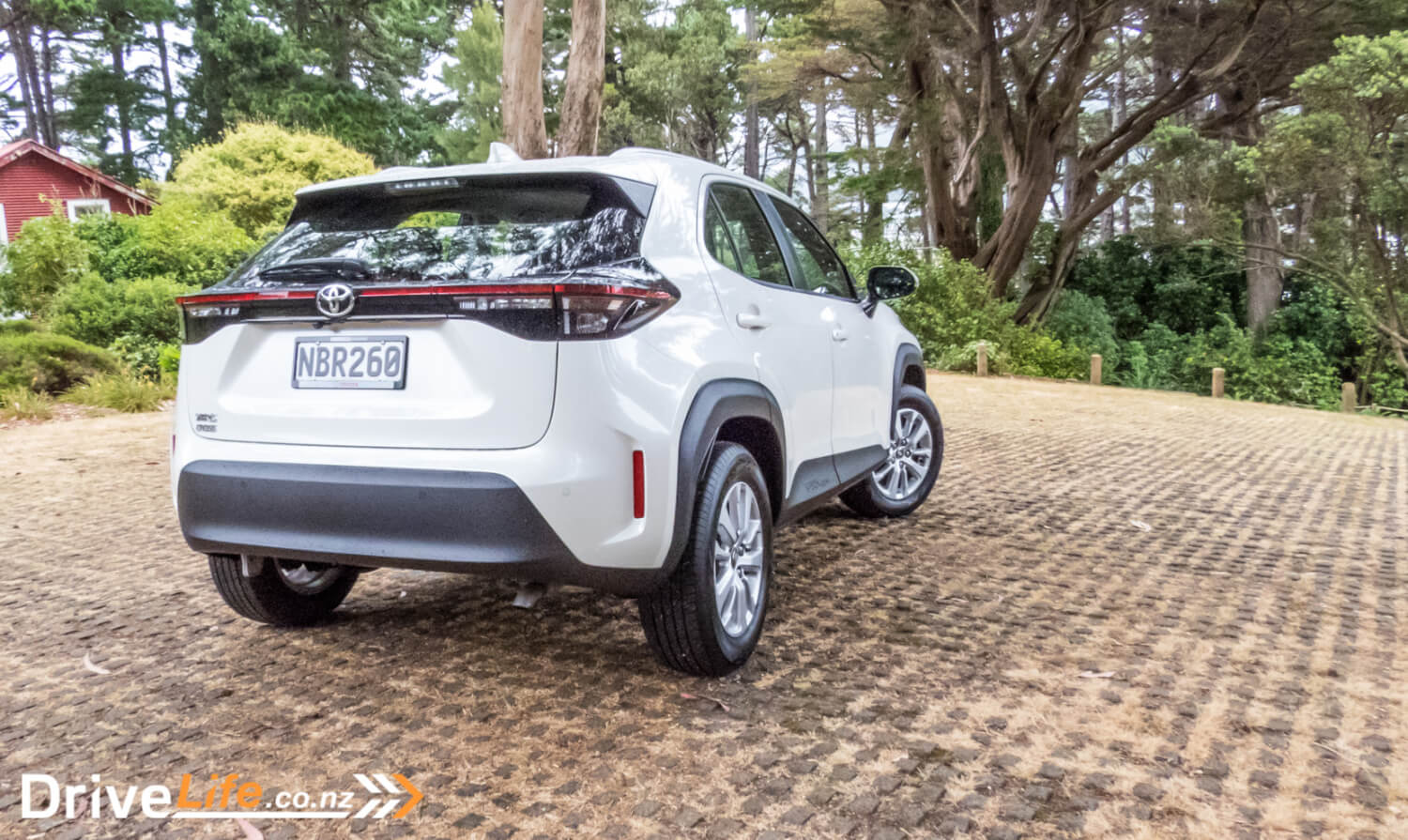
What’s The Interior Like On A 2021 Toyota Yaris Cross GX?
Inside, the interior of the Yaris Cross GX is considerably more restrained with its choices of trims relative to the higher-spec Yaris Cross Limited. The Limited’s lashings of brown trims, brown leather and the retro-styled seat upholstery have all been ditched for a more neutral colour palette.
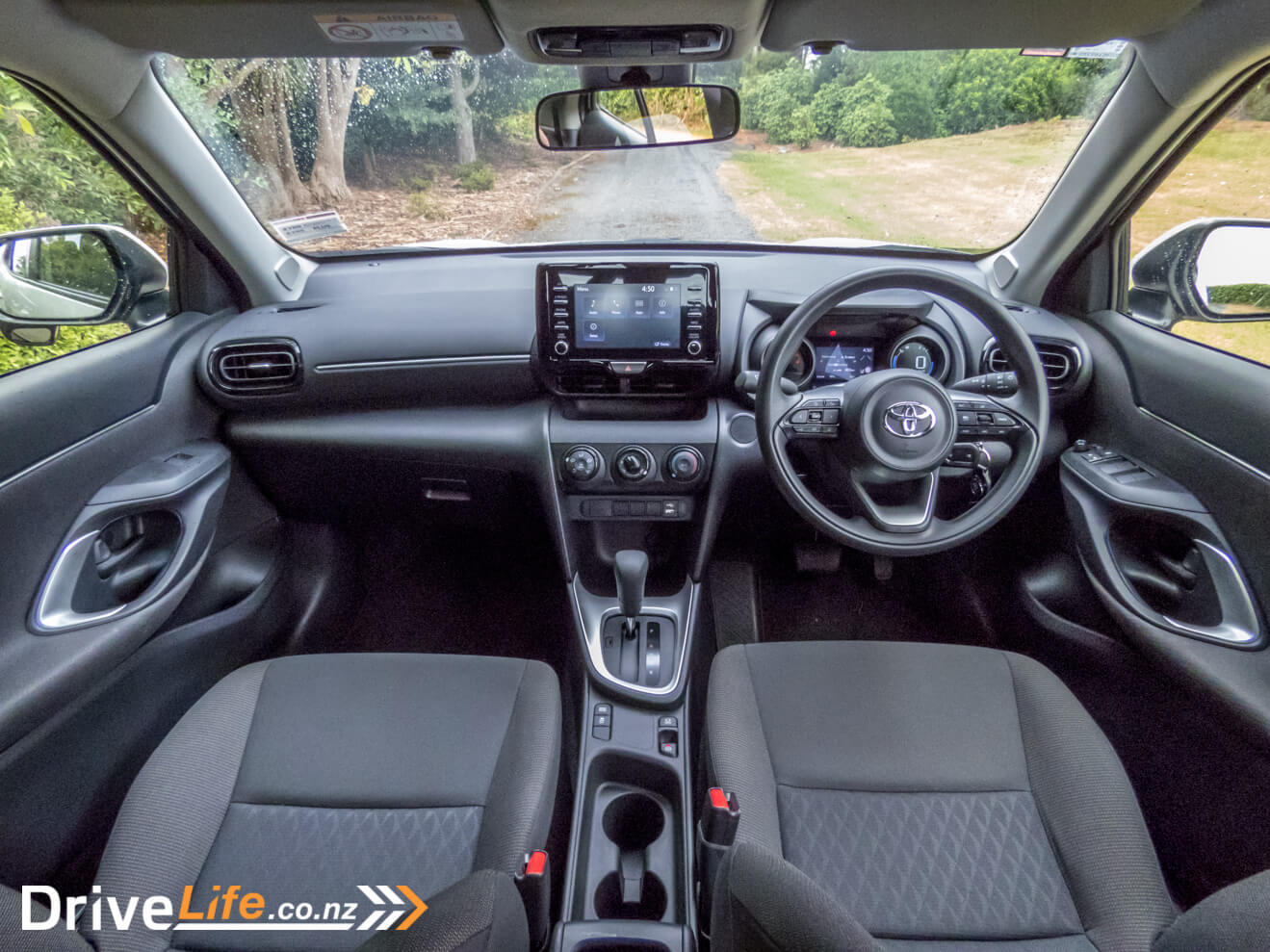
There’s really not much colour inside the GX’s interior. There are a few strips of silver, some piano black trims, and that’s it. Compared to the Limited, it seems considerably down-spec, even if your opinion on the Limited’s interior is mixed.
Personally, I think Toyota could have scored some easy points borrowing the sand-coloured seats and red trims from the Yaris ZR to liven things up a bit. Another signal of the GX’s rank in the model line-up is the series of blank switches sitting under the climate controls.

The dash and interior layout between the Yaris hatch and Yaris Cross are functionally the same. The Yaris cross uses an interesting double bubble-dash design, with the infotainment protruding out from atop the dash.
Initially, I was slightly critical of this dash design. It all seemed rather over-designed, plus some of the different choices of materials didn’t really gel with one another.
However, I should swallow my words on this one. After spending time in both the hatch and the Cross, I began appreciating the design a whole lot more. All the ergonomics are good, there weren’t any unnatural controls, plus there were plenty of storage spaces, including an obvious place for a smartphone. It scores highly on the general liveability front, even if it’s not the nicest to look at.
The instrument cluster has funky digital design, which is more entertaining than an analogue cluster. There’s also a 4.2’’ display in the centre, with many of the accessory and warning lights cascaded over the top. This centre display contains a lot of information, but it’s easy to navigate and there’s plenty of colour to identify different items.
Another nice, functional Toyota feature is that protruding infotainment screen. It’s a 7’’ inch unit, running Toyota’s usual interface. The resolution isn’t the crispest out there, but the interface is intuitive enough and it responds reasonably well. I also appreciate the use of physical shortcuts down the side bezel.
The front seats of the Yaris Cross offer reasonable back support, but otherwise feel quite firm. The seats in this GX model are different to those in the Yaris ZR hatch. The seats in the ZR were better from my point of view.
An obvious benefit of going for the Cross over the hatch is the additional space in the rear. There’s definitely more headroom available, but not any great deal more legroom. Similar to the hatch, my shins were touching the driver’s seat from where my driving position was set. Toyota has been thoughtful enough to offer water bottle storage inside the rear door bins, which is something often overlooked by others.
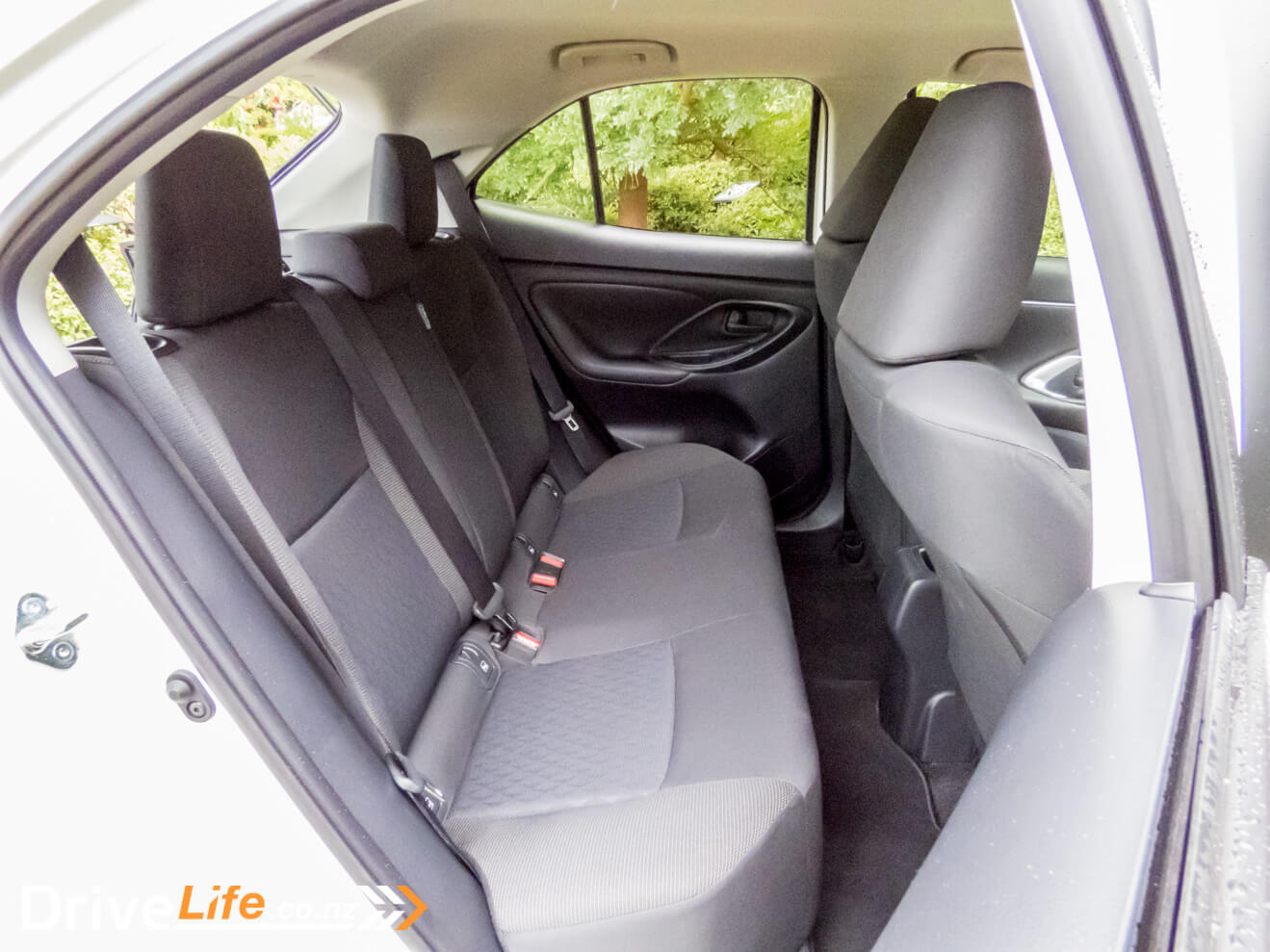
Another clear advantage is in boot space, where the cross gains around 100L over the hatch. The Cross also receives the false floor set-up in the hatch. In place, the load level is flush with the lip of the boot. Remove them, and you’ve got a deeper space for carrying extra cargo.
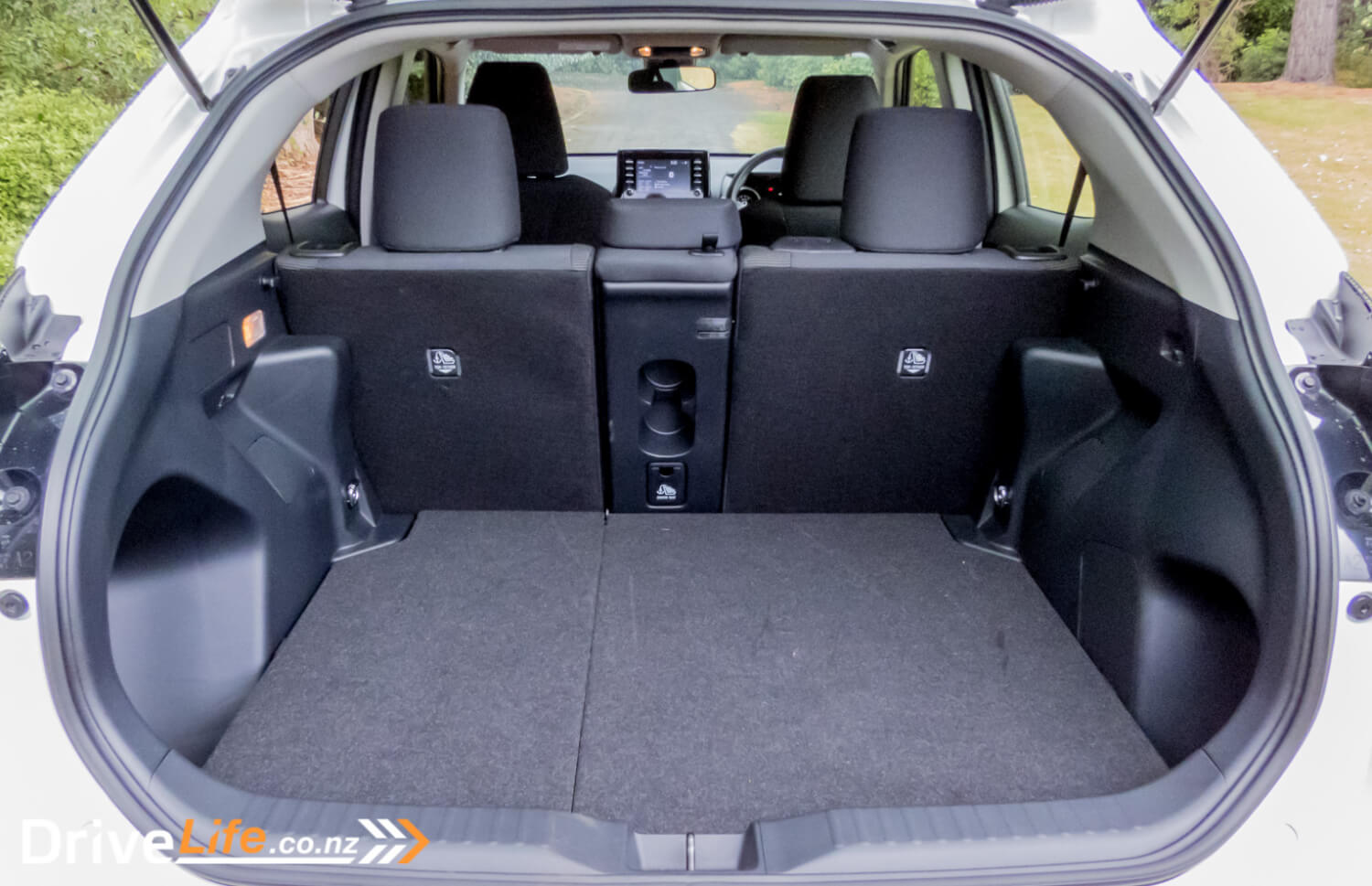
I also had a couple of build quality issues with the hatch, which unfortunately have been inherited by the Yaris Cross. The one of these related to the flimsiness of the centre console and lower trim pieces. Another was with the carpet in the lower footwells which could be pushed inward a few inches against the centre console. Admittedly, I am being nit-picky with these. On a daily basis, you won’t notice them at all, yet it’s an easy win for Toyota to add a few more fasteners in a couple of places.
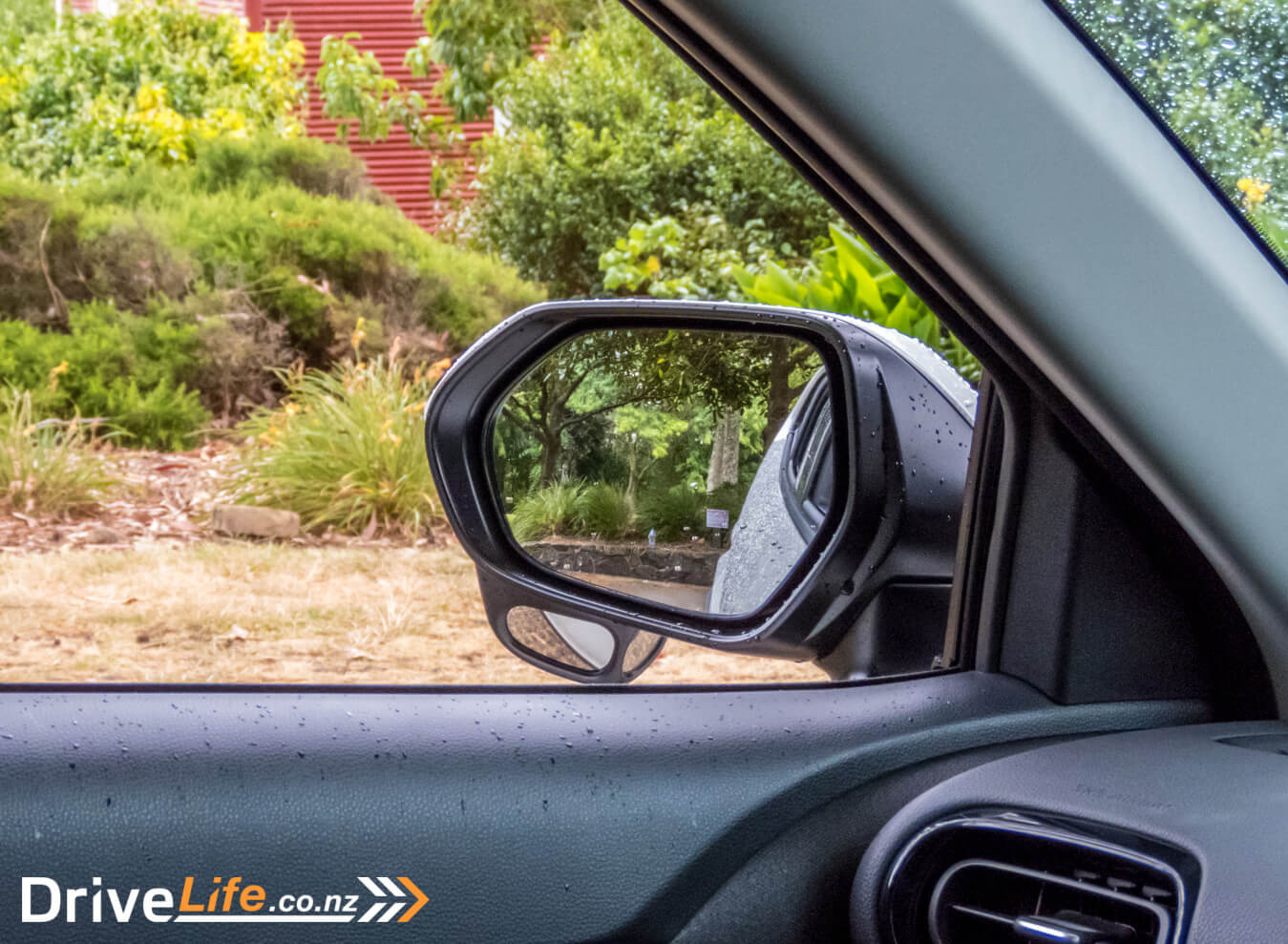
What’s It Like To Drive A 2021 Toyota Yaris Cross GX?
When I first experienced the Yaris hatch, I remarked that it felt more substantial relative to Yaris’ of old. I’m not suggesting the Yaris cancelled its gym membership – the new Yaris range weighs barely over a tonne. Instead, Yaris has a bigger car for a smaller car feeling. I associated it more with a Corolla, as opposed to a Yaris.
The Yaris Cross takes things a step further, being another 240mm longer, 70mm wider and 90mm taller overall. Interestingly, it’s the height you notice the most with the Yaris Cross. You feel like you’re sitting much further off the ground compared with the hatch, despite the actual difference not being substantial.
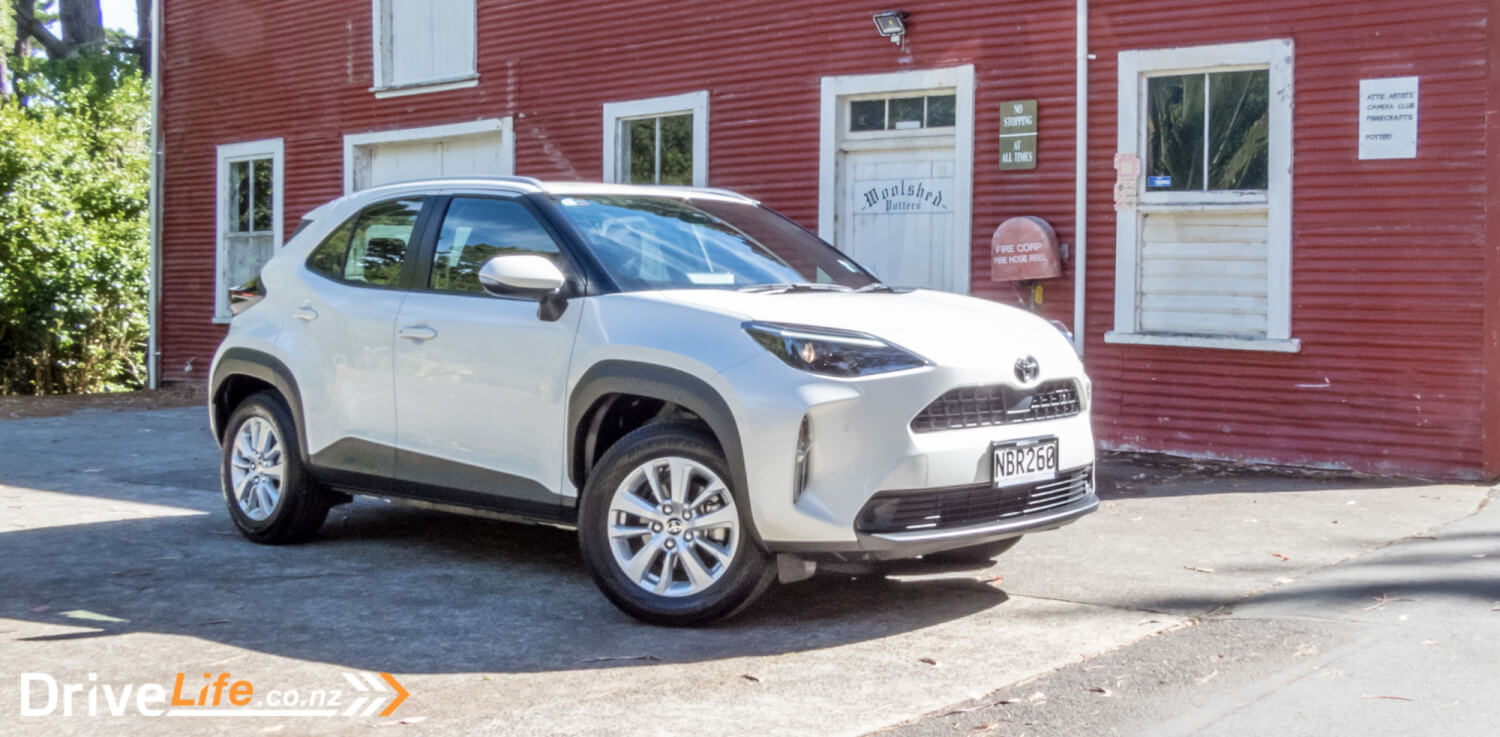
Of course, this is the quintessential crossover formula. Take a hatchback, put it on stilts, bloat the body, and wa-la! A crossover. For all the added practicality it gives, you’re often left with a small SUV with the vehicular dynamics of a potato.
For the Yaris Cross, I’m happy to report that Toyota has avoided spud-like dynamics.
When testing the Yaris hatch, we found it was surprisingly fun to drive for a small compact car. The Yaris Cross uses the same chassis (Toyota’s TNGA-B), although it doesn’t perform quite as well as the hatch. The Cross does introduce more body-roll through quicker corners, but overall its composure is impressive for a crossover. I was expecting to encounter some understeer fairly early on after throwing it into some quicker corners, but honestly, the Cross did much better than I would have ever expected.
Like the hatch, the steering in the Cross is also good too. It’s precise and turning resistance is very uniform.
Another unexpected surprise was the ride quality. Here the Yaris Cross outshines the hatch. Toyota has the suspension dampening for urban driving totally sorted in the Yaris Cross.

Powering the Yaris range is Toyota’s newly developed 1.5-litre, 3-cylinder petrol engine producing 88kW of power and 145Nm of torque in non-hybrid format. We’ve commented on this engine extensively in the other reviews.
The engine delivers ‘good-enough’ performance in the Yaris hatch. It doesn’t produce remarkable figures, but the Yaris is a light car, so overall it didn’t feel underpowered.
It’s a slightly different story with the Yaris Cross. The extra 100kg does hinder performance slightly. However, part of me wondered whether this was just my perspective from sitting higher-up. Speed is a relative feeling, of course.
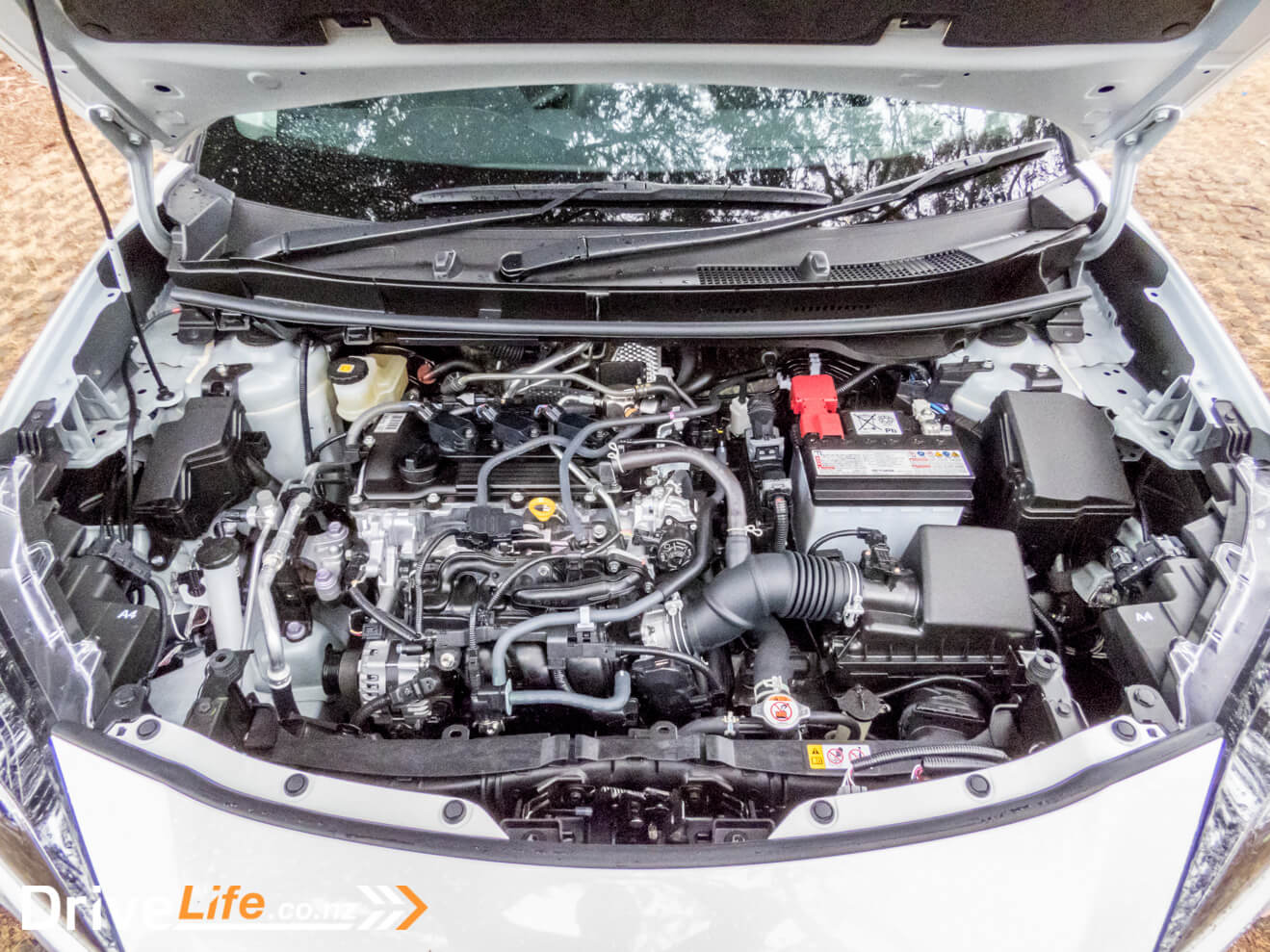
Yet, according to my finely tuned butt-dyno, the Cross does feel slower with the same engine application, particularly in the mid-range.
Performance aside, our greatest complaint with this engine is how noisy it is. The engine is reasonably quiet when driving around with a steady throttle, but the moment you require performance, which is often in hilly Wellington, it really makes a racket. It’s also not a good noise either.
In short, the Cross doesn’t sound happy when you demand anything from it.
The noise level when under load may lead you to believe that the engine isn’t well refined either. Although, I suspect this is just your ears deceiving you. The engine is reasonably smooth, with no detectable vibrations or buzzy-ness.
On the subject of smoothness, Toyota’s CVT transmission is good. It does quite a lot of work in this vehicle to maximise the outputs from the engine and it does so with little drama.
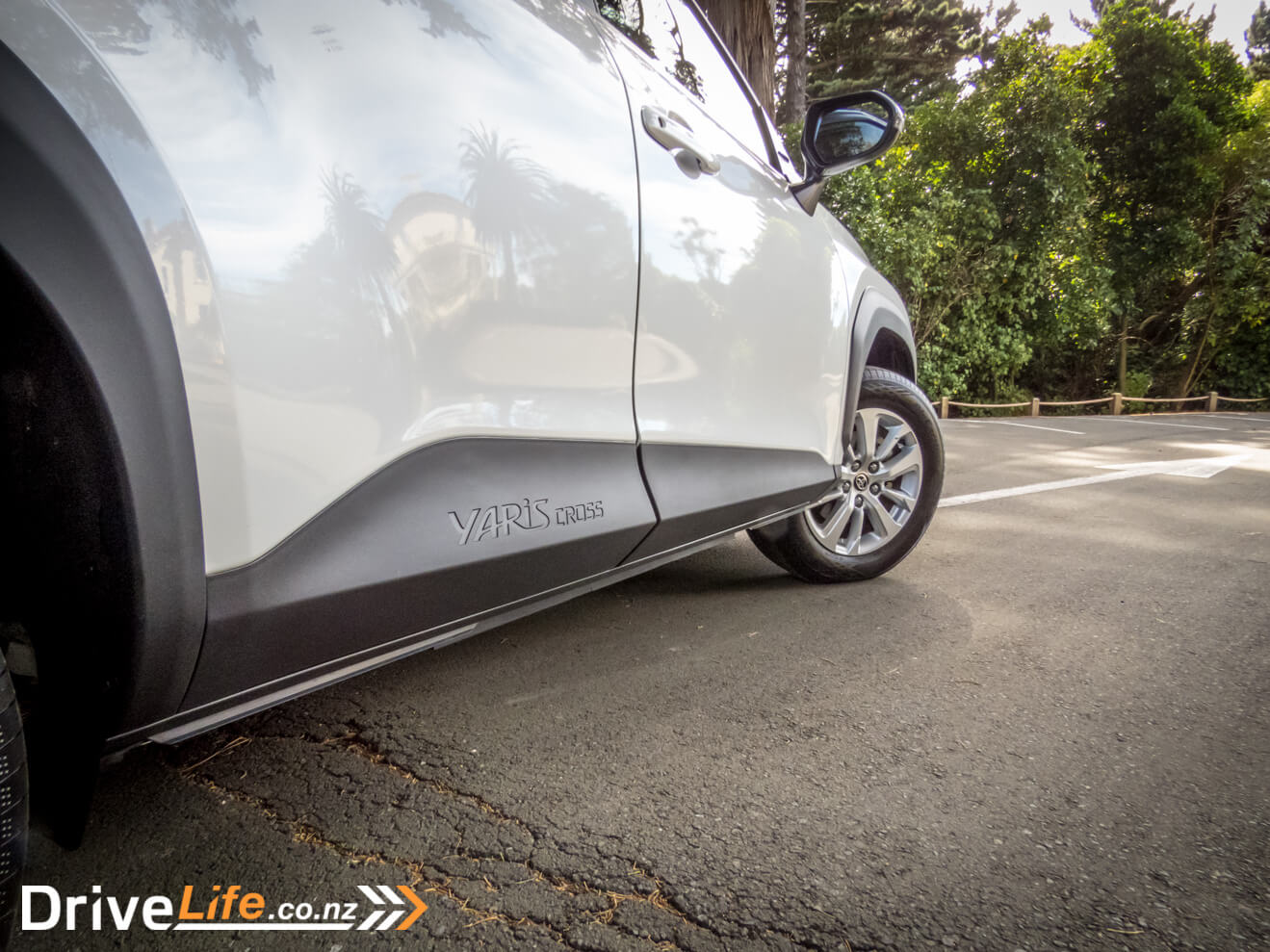
Like the rest of the Yaris range, this Cross GX also has the usual drive modes, which are Eco, Normal, and Power. Eco mode adds a good level of resistance to the throttle, and blunts the engine a bit. This mod feels a tad lethargic, which isn’t the greatest in a car which isn’t particularly quick to begin with.
Power mode perks things up slightly. The transmission will hold the gearing for longer, allowing the engine to use more of the rev-range. However, sometimes it holds on a bit too long. I found myself asking, ‘is it going to shift?’, when I felt the car had exceeded the peak of its powerband. Hence, I kept it in Normal mode for most of the test.
In the real world, this is what will happen anyway. The differences between modes aren’t consequential enough for it to be an active part of the drive. But honestly, this isn’t a Toyota thing, it’s virtually the same for any crossover pretending to masquerade as something sporty.
Spending most of our time in Normal mode, we still achieved a fuel economy of 6.4L/100kms during our time with the Yaris Cross. This is only 0.2L above our result with the ZR hatch, but there’s a tangible gap above Toyota’s claimed combined figure of 5.4L/100kms.
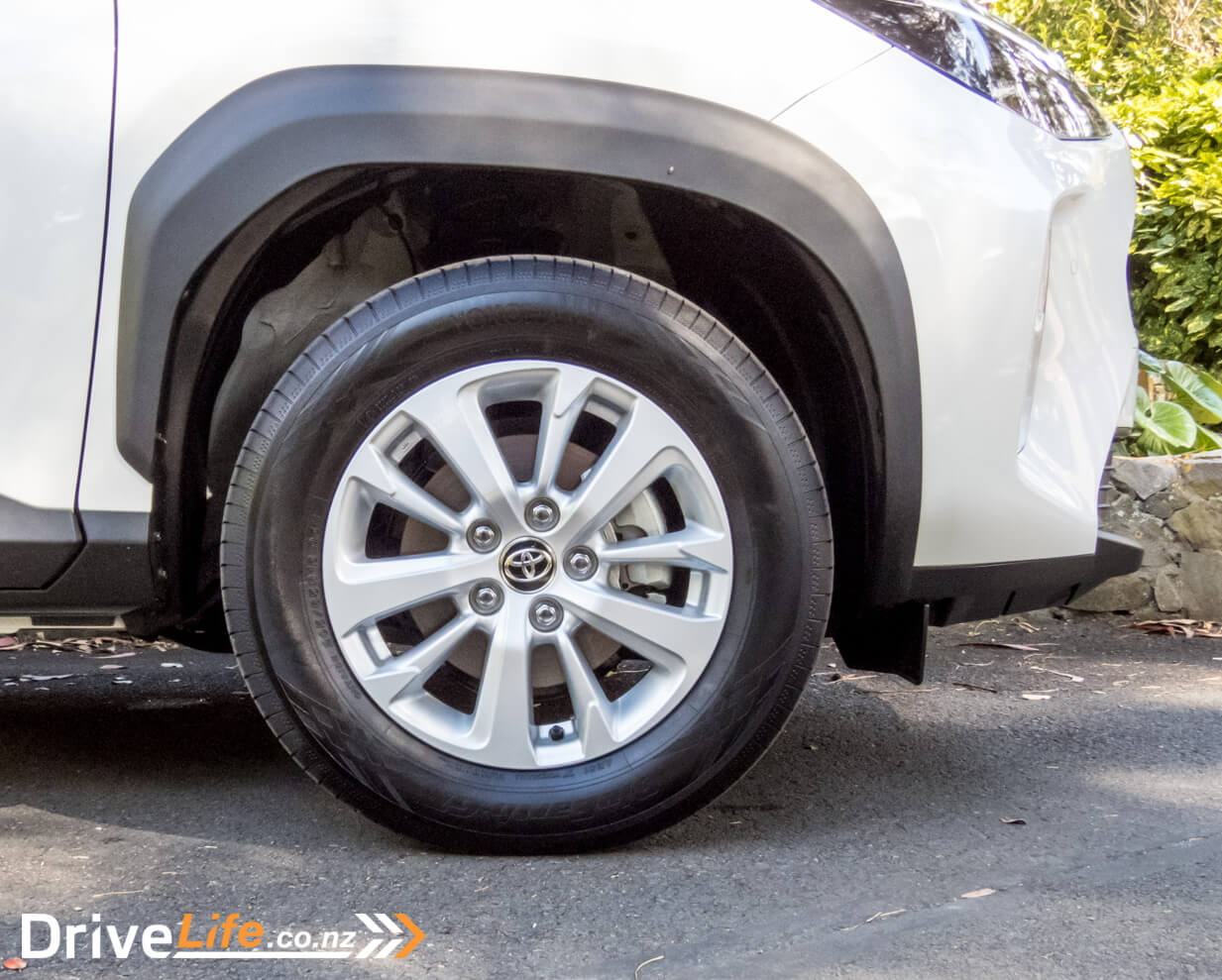
Thus far, I would rank the driving experience of the Yaris Cross quite highly, in spite of the noisy engine. However, where the Yaris Cross truly shines is with its safety technology.
Even on the base spec car, Toyota bundles in its Safety Sense Package, which gives the Yaris Cross an extensive equipment list. One big ticket item is adaptive cruise control, which is impressive to see in any car at this price point.
Even more impressive is that the system in the Yaris Cross works down to halt, whereas in the Yaris hatch, the driver must take over from below 25km/h. This is a big selling point in my opinion. Adaptive cruise which works in a traffic jam is one of my favourite features in any modern car.
The safety tech is seldom without quirks. In the case of the Yaris Cross, I wasn’t able to invest much confidence in the lane-centring assist. It was a tad twitchy, and didn’t seem to work as consistently as I’d have expected. Still, it’s impressive to see it included at this price point.
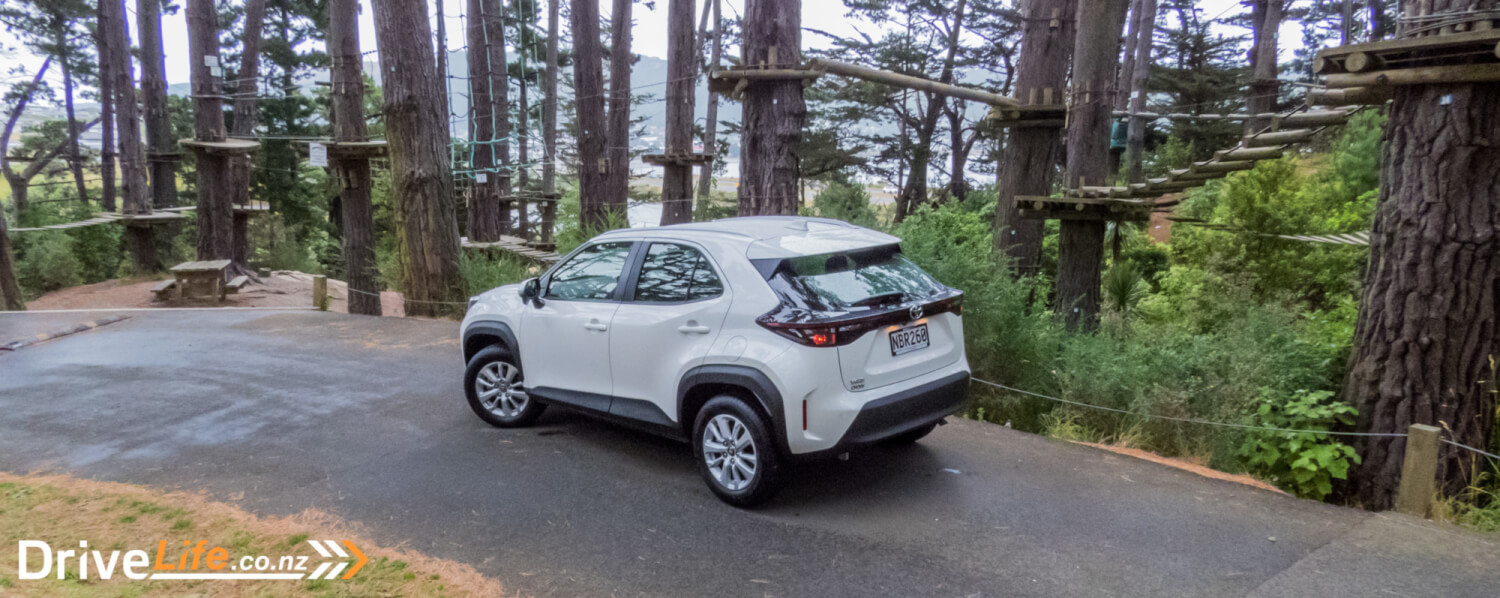
What’s The Competition For The 2021 Toyota Yaris Cross GX?
| Brand/Model | Engine | Power (kW)/Torque (Nm) | Seats | Boot Space, Litres | Economy, L/100km (claimed) | Price Highest to Lowest |
| Mitsubishi ASX VRX | 2.4-litre, 4-cylinder petrol | 125/226 | 5 | 393 | 7.9 | $37,190 |
| Ford Puma | 1.0-litre, 3-cylinder turbo petrol | 92/170 | 5 | 410 | 5.3 | $34,990 |
| Nissan Juke Turbo ST | 1.0-litre, 3-cylinder turbo petrol | 84/180 | 5 | 422 | 5.8 | $33,650 |
| Honda HR-V S | 1.8-litre, 4-cylinder petrol | 105/172 | 5 | 437 | 6.6 | $31,990 |
| Kia Seltos LX | 2.0-litre 4-cylinder Petrol Engine | 110/180 | 5 | 468 | 6.8 | $31,990 |
| Mazda CX-3 GLX | 2.0-litre, 4-cylinder petrol | 110/195 | 5 | 264 | 6.3 | $31,990 |
| Hyundai Venue Elite | 1.6-litre, 4-cylinder petrol | 90/151 | 5 | 355 | 7.2 | $29,990 |
| Renault Duster | 1.6-litre, 4-cylinder petrol | 84/156 | 5 | 445 | 6.9 | $29,990 |
| Suzuki S-Cross LTD 2WD | 1.6-litre, 4-cylinder petrol | 88/156 | 5 | 440 | 5.9 | $29,990 |
| Toyota Yaris Cross GX | 1.5-litre, 3-cylinder petrol | 88/145 | 5 | 390 | 5.4 | $29,990 |
| Seat Arona Style | 1.6 Litre 4-cylinder Petrol Engine | 81/155 | 5 | 400 | 6.4 | $27,990 |
What’s The Pros And Cons For The 2021 Toyota Yaris Cross GX?
Pros
- Great standard safety features
- Adaptive cruise control that works to a halt
- Excellent handling for a crossover
- Good ride quality
- Good transmission
- Nifty multi-level boot
- Value for money
Cons
- Rough sounding engine
- Some flimsy interior bits
- Firm seats
- Not a lot of power
- Looks cheap in areas
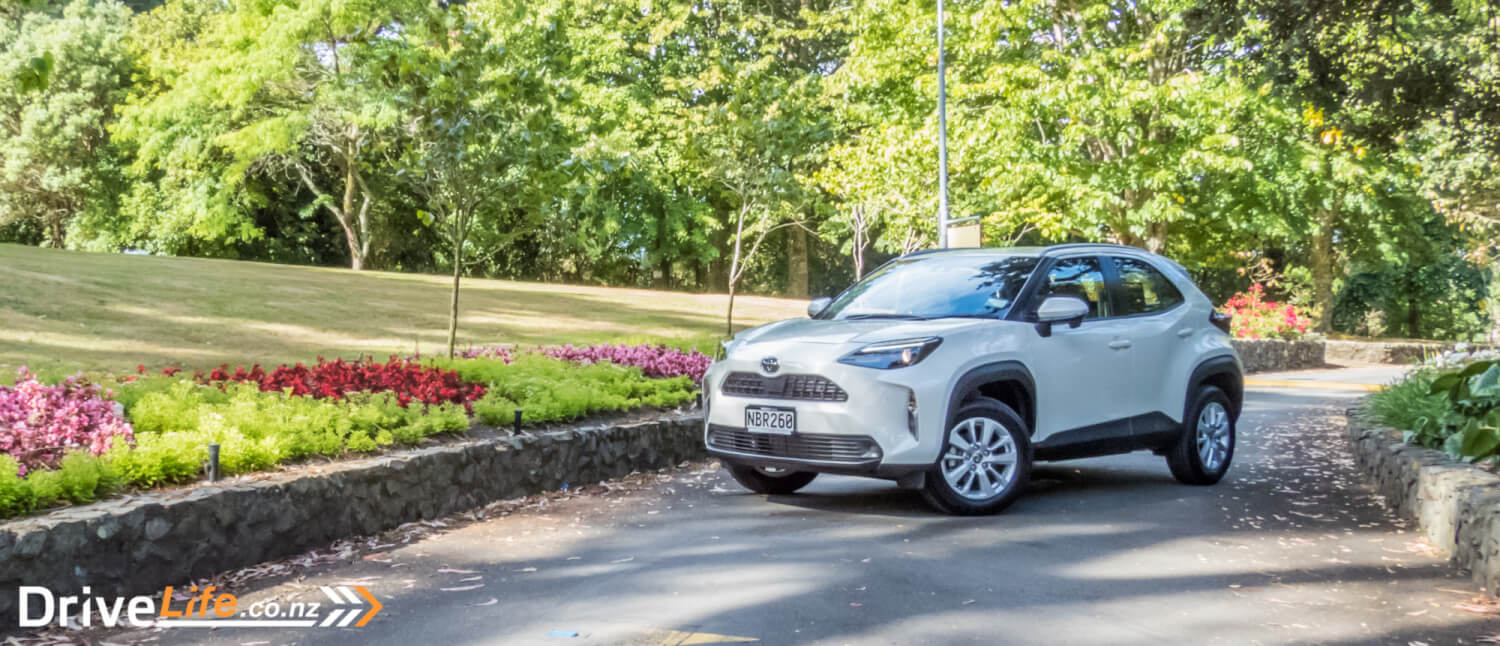
2021 Toyota Yaris Cross GX – Specifications
| Price as Tested | $29,990 |
| Engine | 1.5-litre, 3 cylinder, M15A-FXE, petrol engine |
| Power, Torque kW/Nm | 88kW@6,600rpm 145Nm@4,800-5,200rpm |
| Transmission | Direct-shift Continuously Variable Transmission (E-CVT) |
| Spare Wheel | Space saver |
| Kerb Weight, Kg | 1,185 |
| Length x Width x Height, mm | 4180 x 1765 x 1590 |
| Cargo Capacity, litres | 390 (rear seats up) |
| Fuel capacity, litres | 42 |
| Fuel Efficiency | Advertised Spec – combined – 5.4L/100km Real World Test – combined – 6.4L/100km Low Usage: 0-6 / Medium Usage 6-12 / High Usage 12+ |
| Towing Capacity Kg, unbraked/braked | 550/1250 |
| Turning circle, metres | 10.6 Small: 6-10m / Medium 10-12m / Large 12m+ |
| Warranty | 3 Year, 100,000Km Warranty (excl Toyota Driveway Value) |
| ANCAP Safety Ratings | 5 Star |


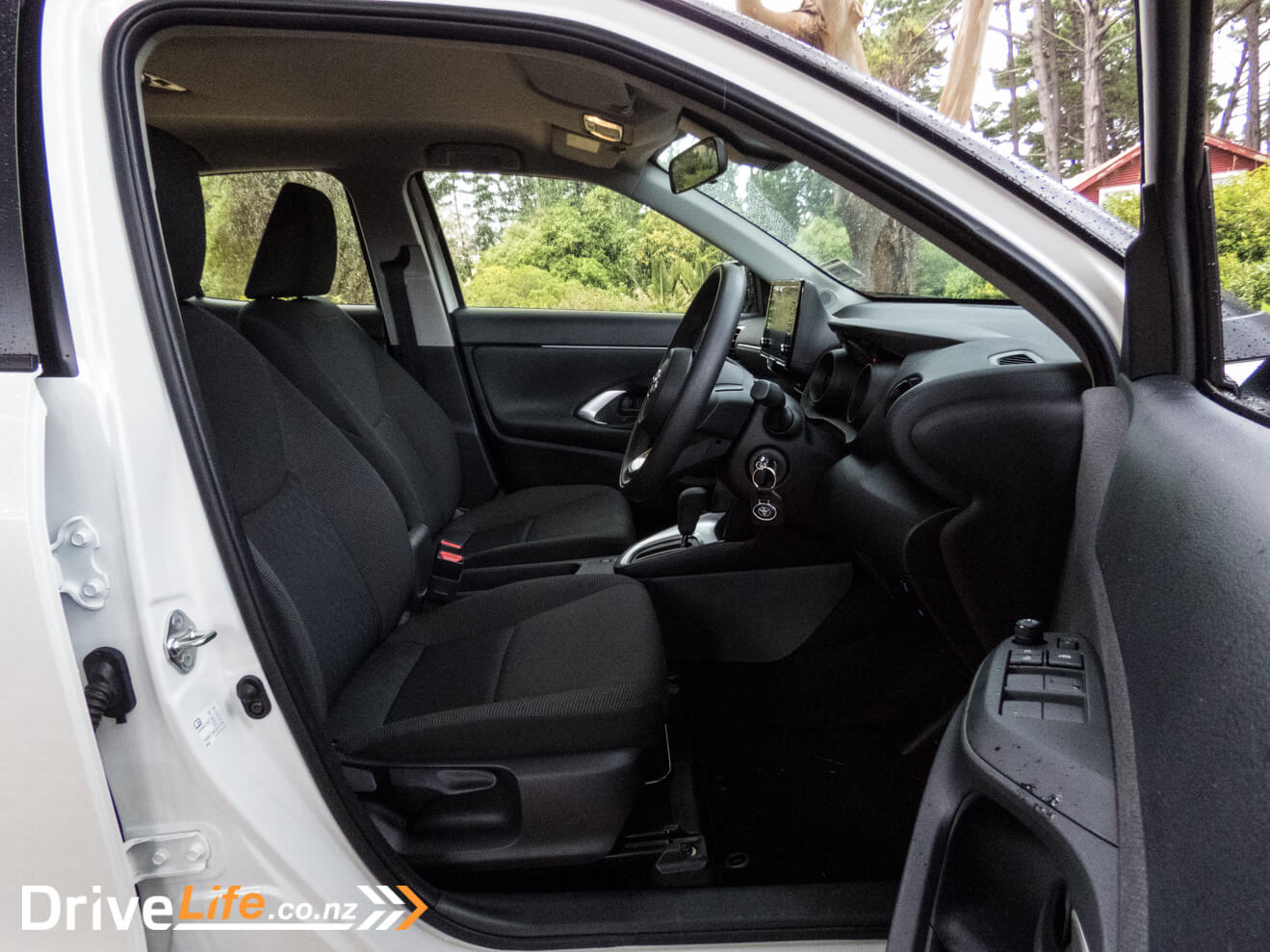
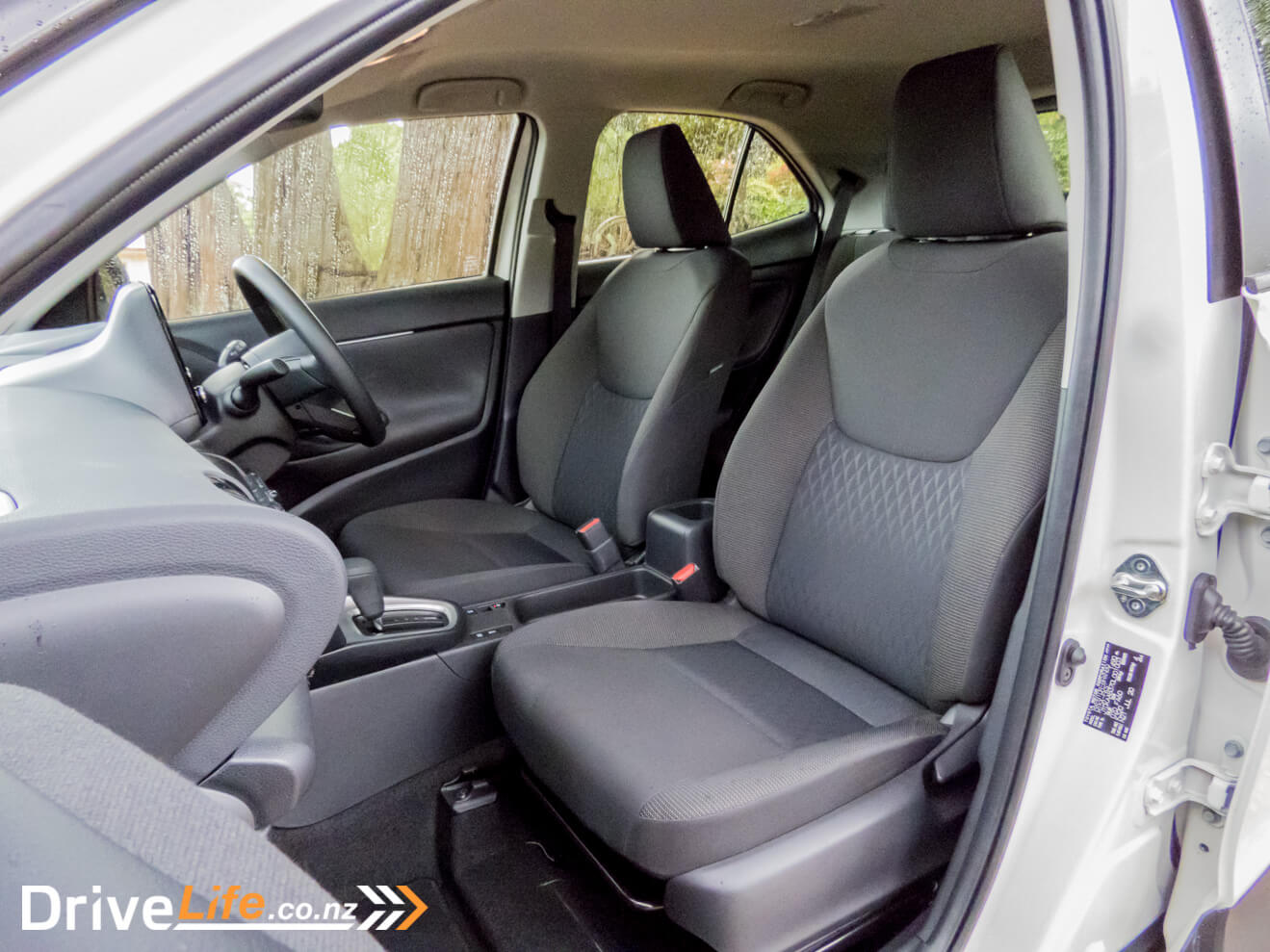
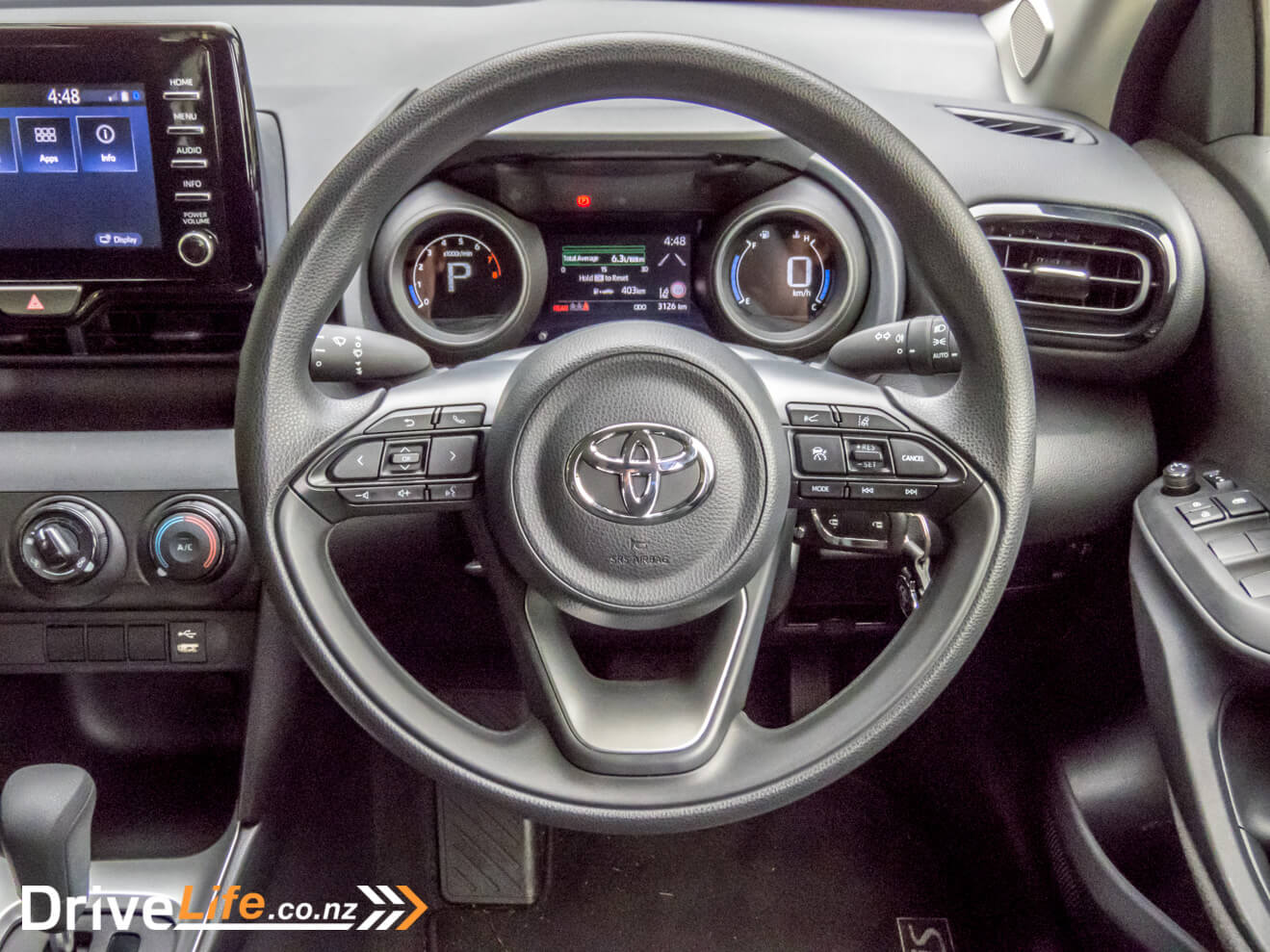
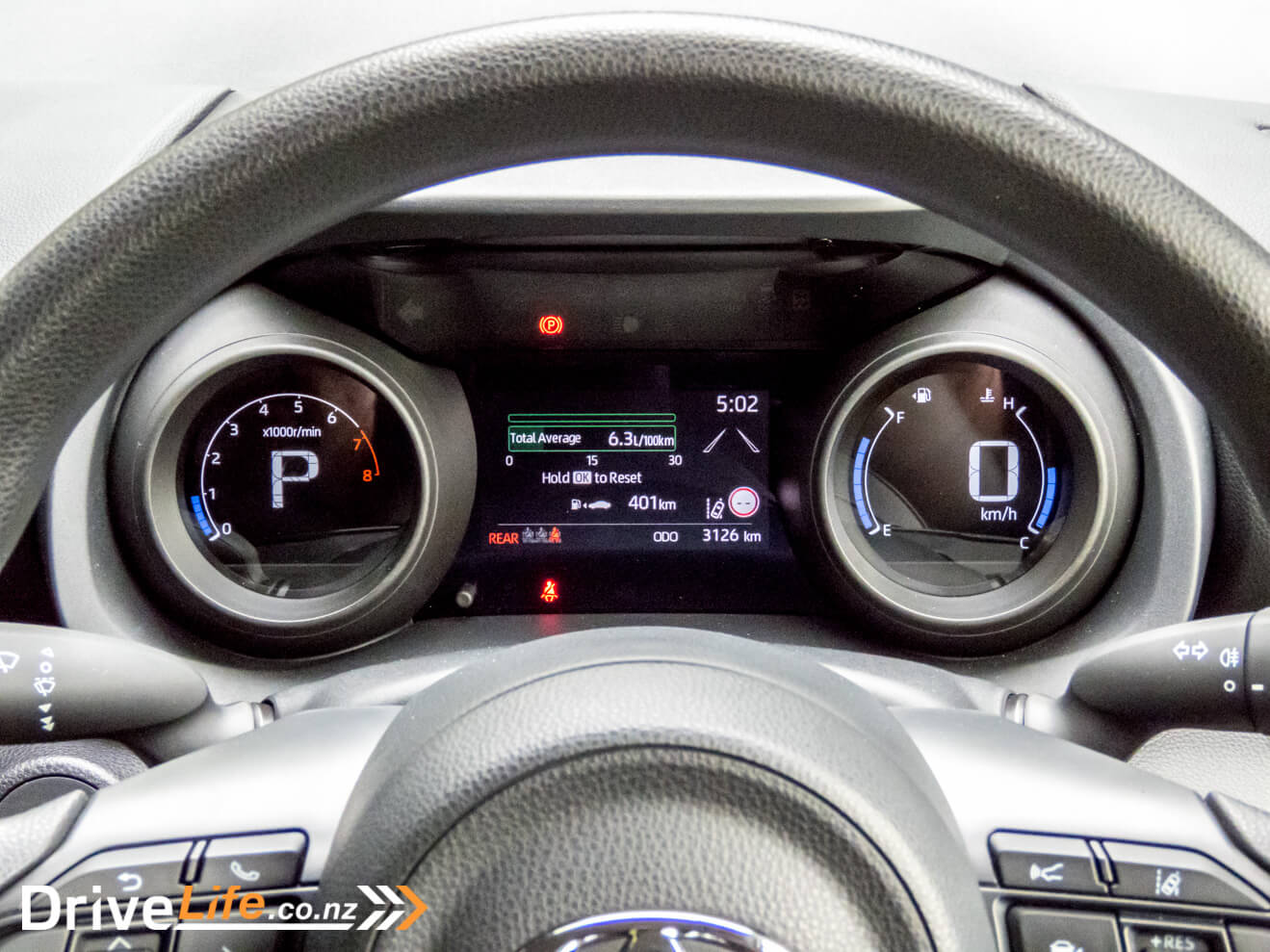
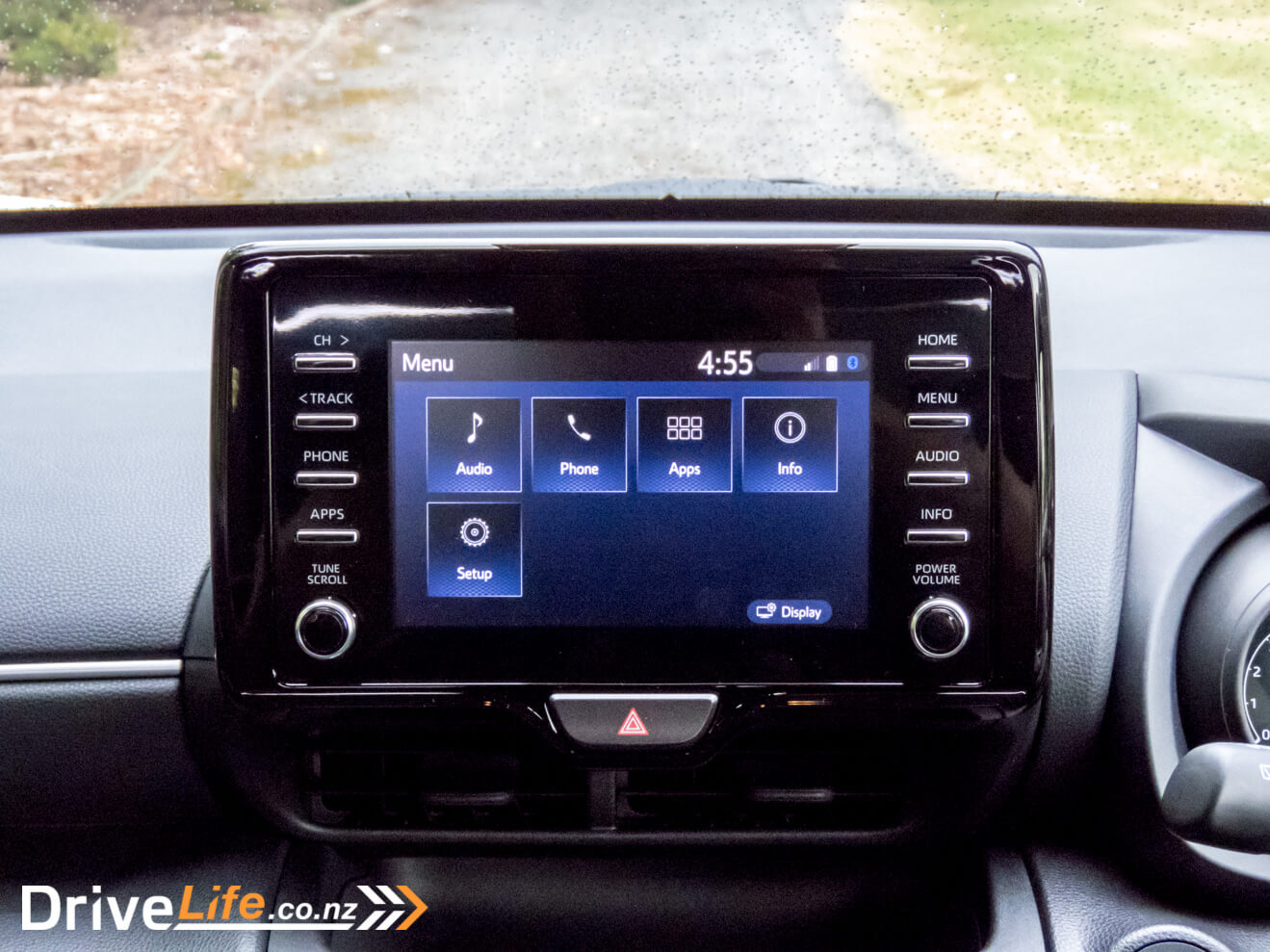
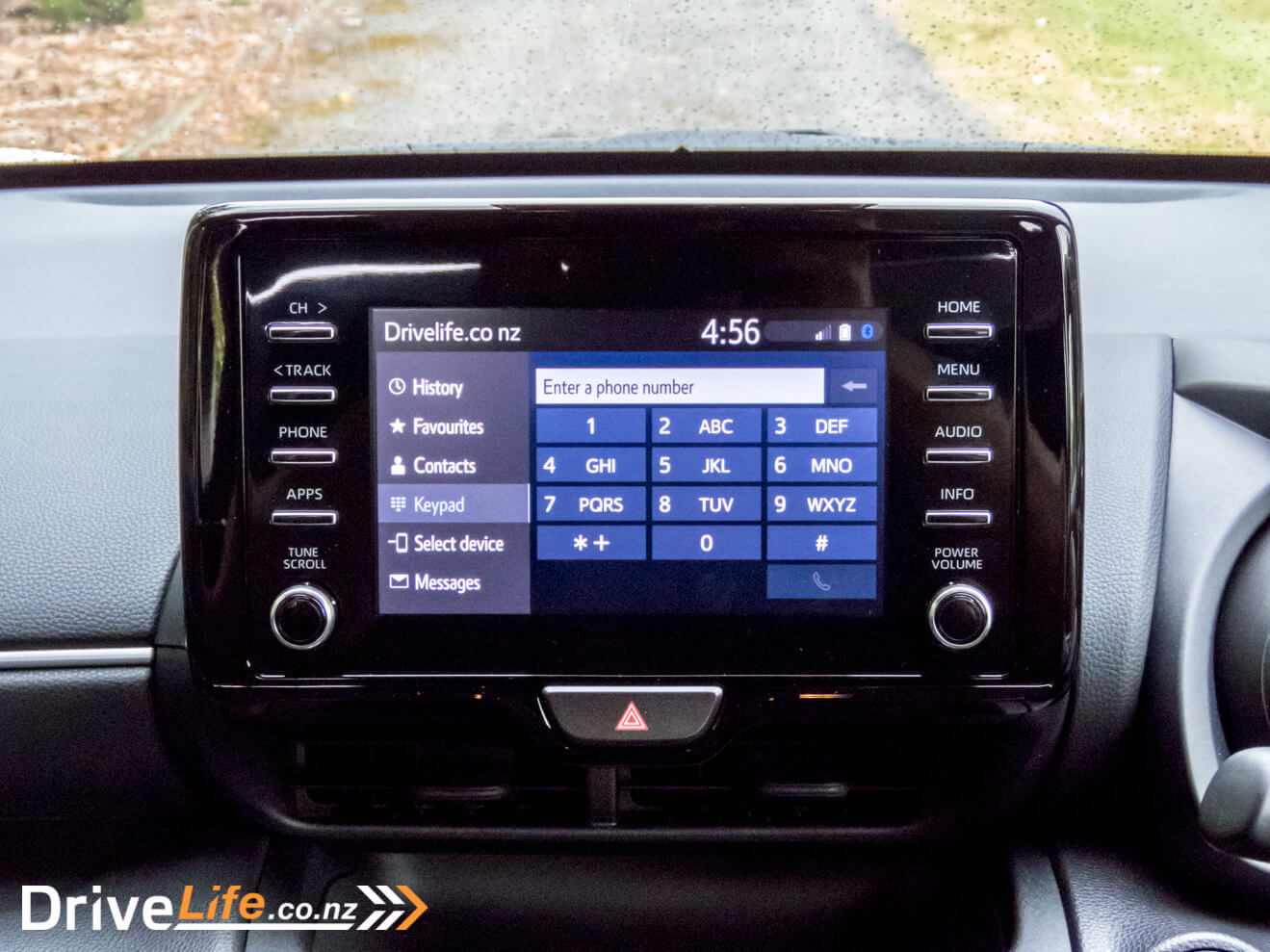
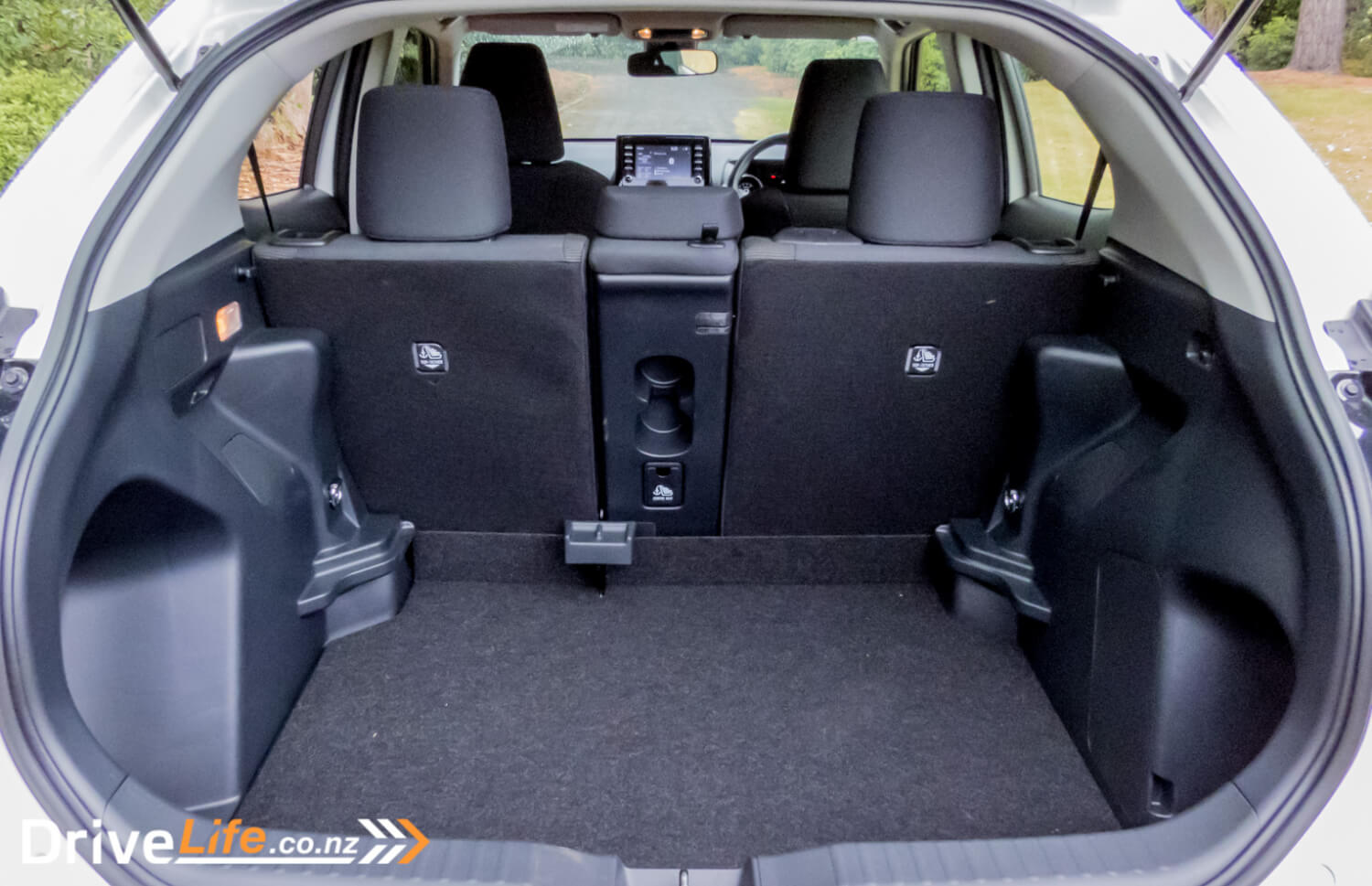
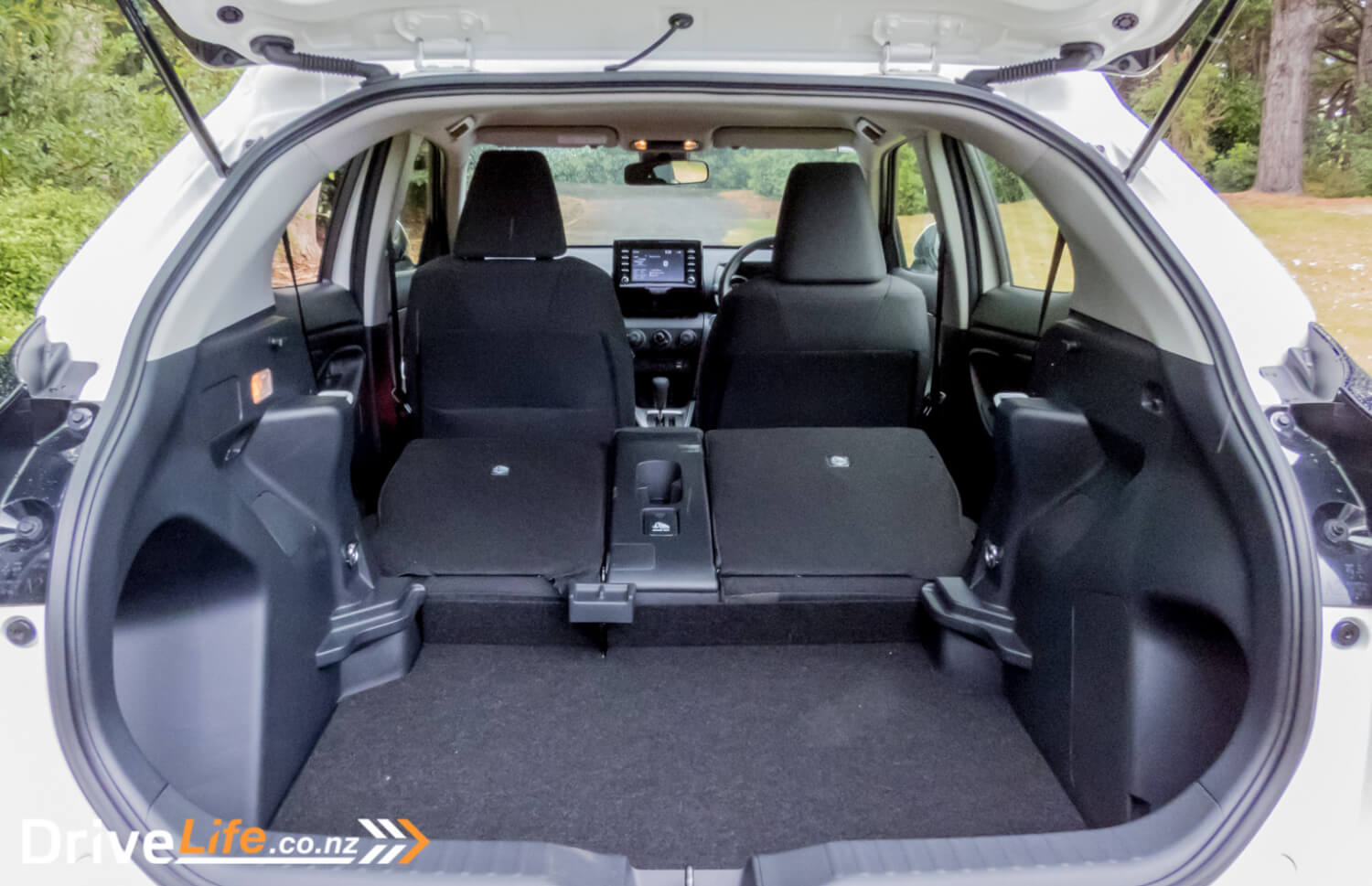






can a towbar be added to this car as im wanting to buy a yaris can i get this answered for me please
HI there
If you look at our specs table you will see that Toyota claims this model to have a tow rating of 550/1250kg, so it certainly seems like you can fit it with a tow bar.
But you should also confirm this with a Toyota dealer before purchasing.